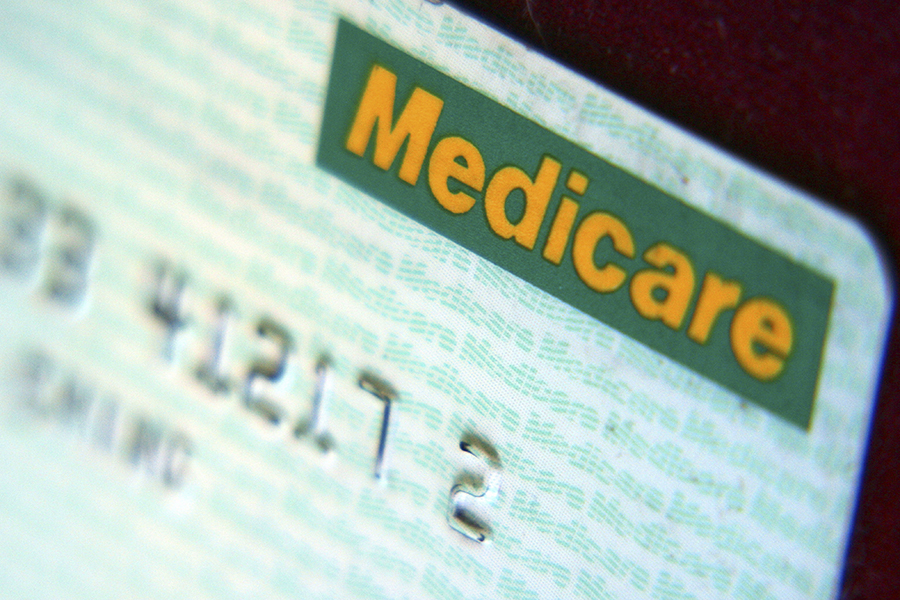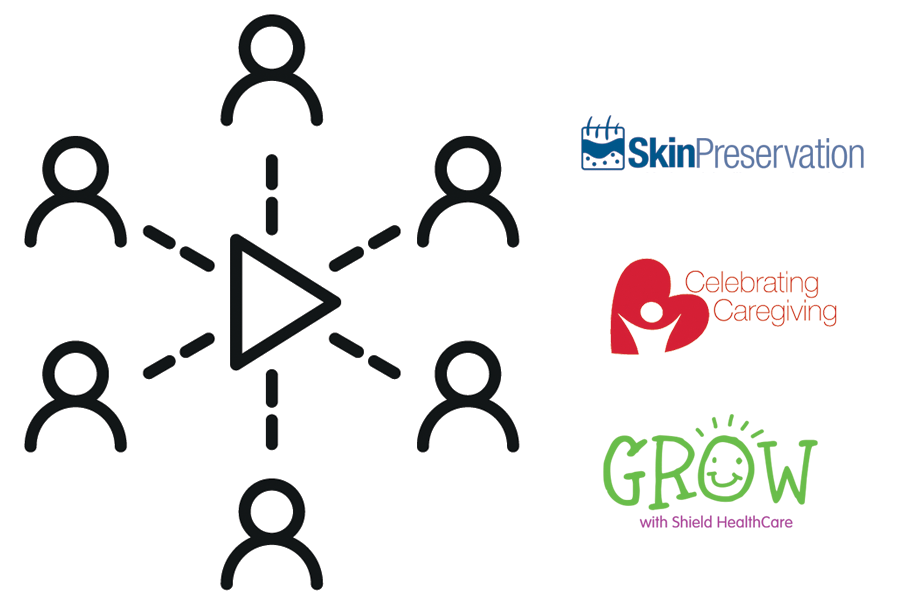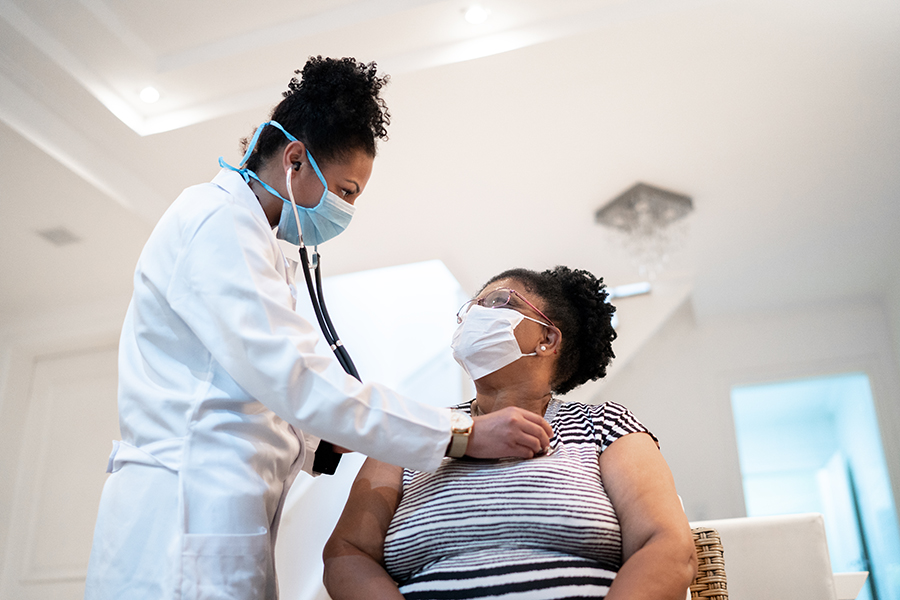Medicare Cuts Threaten Access to Care
Home health agencies and advocates have expressed growing concern over a proposed rule released by CMS earlier this year that would slash Medicare payments by $350 million in 2016. Advocates and providers are concerned that the rule will place unnecessary financial burdens on home health care providers and ultimately threaten beneficiaries’ access to care. (American Health Line, September 10, 2015)
The proposed payment rule for the Home Health Prospective Payment System (HHPPS) – issued July 10, 2015 – includes the third consecutive year of a four-year phased rebasing of the standardized 60-day home care episode rate (case mix).
Case mix rebasing was called for by Congress as part of the Affordable Care Act in 2010. CMS determined that case mix weight needs to be reduced by 14% to achieve the rebasing goals. However, the ACA prohibits CMS from reducing rates by more than 3.5% a year, calling for a four-year phase-in of any adjustments. Beginning in 2014, CMS enacted a four-year phased reduction, continuously cutting rates by 3.5% each year from 2014 through 2017.
In addition to the 3.5% case mix weight cut, CMS also proposed an additional 1.72% cut to the standard episode rate in 2016 and 2017. This additional cut is proposed to correct what the agency sees as slower-than expected growth in case-mix intensity. In other words, CMS concluded that providers were billing Medicare for delivering services to more expensive patients at a rate that exceeds the actual growth in patient acuity. (Virgil Dickson/Modern Healthcare, September 8, 2015)
The proposed $350 million payment reduction is nearly six times higher than the $60 million payment reduction to home health providers in 2015.
What is Case Mix?
The Balanced Budget Act of 1997 (amended in 1999) first called for the development and implementation of a prospective payment system (PPS) for Medicare home health services. This changed the reimbursement model for Medicare Home Health Care from a cost-based method to a bundled PPS method. As of October 1, 2000, the home health PPS became the method of reimbursement for all home health agencies (HHAs). (CMS – Home Health PPS, University of Rochester URMC)
Through the prospective payment system (PPS), Medicare pays home health agencies a predetermined base payment for each patient. The payment is then adjusted to account for several factors, including:
- health condition (clinical characteristics) of the beneficiary
- service needs of the beneficiary, and
- the geographic differences in wages for HHAs across the country
This payment adjustment is referred to as the “case-mix adjustment.” Under PPS, payments are made for each 60-day episode of care for each beneficiary.
Value-Based Purchasing Program
In addition to the $350 million payment cut in 2016, the proposed rule also outlines the launch of a Value-Based Purchasing Program, also called for under the Affordable Care Act. This pilot program is scheduled to start in January in 9 randomly-selected states: Arizona, Florida, Iowa, Maryland, Massachusetts, Nebraska, North Carolina, Tennessee and Washington.
According to acting CMS Administrator Andy Slavitt, the goal of the value-based purchasing demonstration is that “no matter where the care is delivered, it is supported by a payment system that rewards providers who deliver the highest quality outcomes.” Other value-based purchasing programs currently underway include the Hospital Value-Based Purchasing Program (Hospital VBP Program), also called for in the Affordable Care Act.
Under the Home Health VBP demonstration, CMS would evaluate home health agencies on specific quality metrics in 2016, using quality data from 2015 as a baseline. CMS would then increase or decrease each participating agency’s Medicare payments by 5% accordingly. The payment adjustment would increase from 5% to 8% in subsequent years. The quality metrics HHAs would be evaluated on include:
- Care coordination
- Clinical quality care
- Patient safety, and
- Efficiency and cost reduction
Several agencies and advocates for senior citizens have spoken out against the proposed demonstration, including the Center for Medicare Advocacy, the Association for the Advancement of Retired Persons (AARP), Kindred at Home, Dignity Health and the Medicare Payment Advisory Commission (MedPAC).
In comments on the proposed rules, the Center for Medicare Advocacy expressed concern that the quality measures place too much emphasis on improvement:
“The proposed rules virtually guarantee that patients who cannot improve, but still need skilled home care will not get that skilled care because HHAs will have no incentive under the HHVBP Model to provide it. In fact, HHAs risk severe financial penalties of up to 8% if they admit too many patients with conditions that are incapable of improving. This lack of financial incentive combined with risk of severe financial penalties will, based on CMS’ improvement only quality measures, be especially damaging for patients needing complex skilled nursing care.” (Center for Medicare Advocacy: Comments on Proposed Rules, September 1, 2015)
AARP expressed similar concern that the proposed pilot program would limit beneficiaries’ access to quality home health care:
“We are concerned that the demonstration could reduce access to home health care for some beneficiaries, either because HHAs leave the market and there is not sufficient supply, or because HHAs avoid beneficiaries whom they think will reduce their performance scores.” (Virgil Dickson/Modern Healthcare, September 8, 2015)
In its lengthy comments on CMS’ proposed rule, the Medicare Payment Advisory Commission made suggestions to improve the design of the proposed model, including reducing the number of quality measures and putting “a declining emphasis on improvement as a factor.” (MedPAC: Comments on CMS Proposed Rule… August 18, 2015)
Over 100 comments were submitted to CMS on the proposed rule by September 4, 2015. The final rule is due November 2015.
References:
- https://s3.amazonaws.com/public-inspection.federalregister.gov/2015-16790.pdf
- https://www.americanhealthline.com/todays-news/2015/09/10/home-health
- http://www.modernhealthcare.com/article/20150707/NEWS/150709949
- http://www.modernhealthcare.com/article/20150908/NEWS/150909912
- http://www.modernhealthcare.com/article/20141031/NEWS/310319961
- http://blogs.hallrender.com/ltc/2013/07/02/rebasing-has-arrived-cms-publishes-home-health-pps-2014-proposed-rule/
- https://www.cms.gov/Medicare/Medicare-Fee-for-Service-Payment/HomeHealthPPS/Downloads/Analyses-in-Support-of-Rebasing-and-Updating-the-Medicare-Home-Health-Payment-Rates-Technical-Report.pdf
- https://www.cms.gov/Medicare/Medicare-Fee-for-Service-Payment/HomeHealthPPS/index.html
- https://urresearch.rochester.edu/institutionalPublicationPublicView.action?institutionalItemId=7856
- https://www.cms.gov/Outreach-and-Education/Medicare-Learning-Network-MLN/MLNProducts/downloads/Hospital_VBPurchasing_Fact_Sheet_ICN907664.pdf
- http://www.medicareadvocacy.org/comments-on-proposed-rules-cy-2016-home-health-prospective-payment-system-rate-update-home-health-value-based-purchasing-model-and-home-health-quality-reporting-requirements/
- http://www.medpac.gov/documents/comment-letters/medpac-comment-on-cms’s-proposed-rule-on-the-home-health-prospective-payment-system.pdf?sfvrsn=0
- https://www.cms.gov/newsroom/mediareleasedatabase/fact-sheets/2014-fact-sheets-items/2014-10-30.html






















